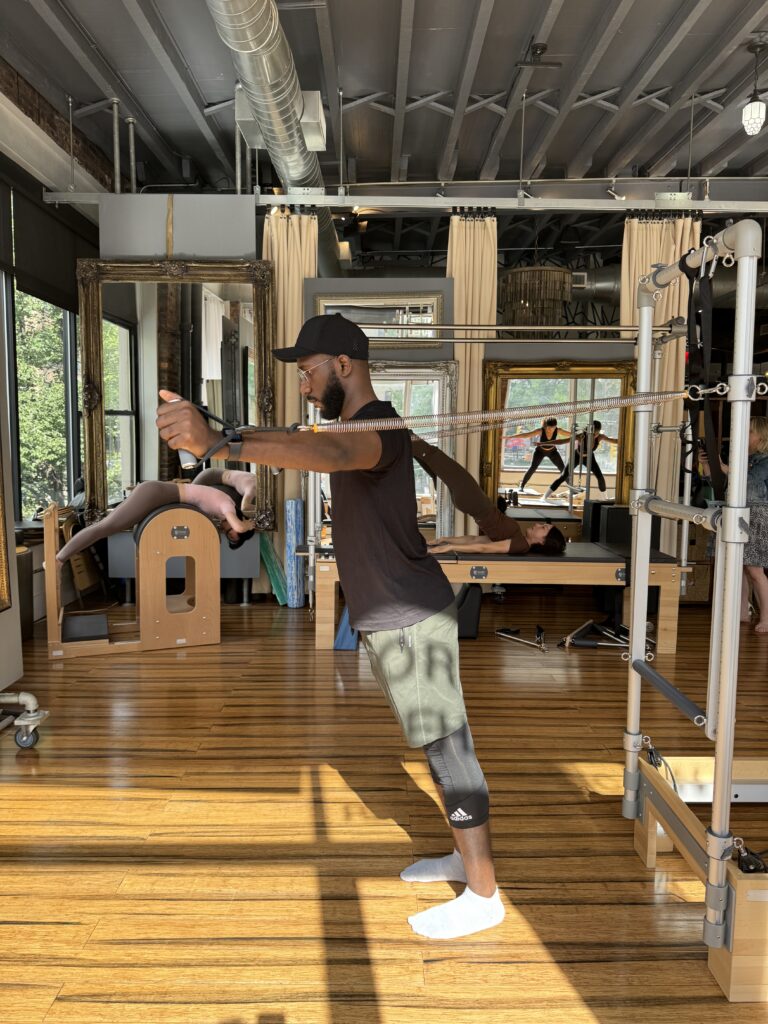Pilates is often recognized for its ability to improve posture, strengthen core muscles, and increase flexibility. But what about its role in burning calories? If you’re wondering how Pilates fits into a weight loss or body recomposition plan, this article is for you. While not traditionally viewed as a high-calorie-burning activity, Pilates can still make a meaningful contribution to your fitness goals—especially when practiced consistently and strategically.

Does Pilates Burn Calories?
Yes, Pilates does burn calories. While it’s generally considered a low-to-moderate intensity exercise, especially when compared to aerobic workouts like running or cycling, Pilates still demands energy and muscular engagement. Your calorie burn will depend on several factors including body weight, session type, and intensity.
According to a 2020 study by Almeida et al., different types of Pilates sessions produce varying levels of caloric expenditure:
- Traditional sessions (low volume, long rest) had the lowest calorie burn.
- Non-traditional formats (higher volume, short rest) significantly boosted total energy expenditure (EE), heart rate, and oxygen consumption.
- Still, overall caloric burn remained modest even in high-effort Pilates formats compared to aerobic training.
How Many Calories Does Pilates Burn Per Session?
Based on available research and practitioner estimates, here’s a general breakdown of what you might expect to burn during a 50–60 minute Pilates session:
- Traditional mat Pilates: 170–250 calories
- More intense mat sessions or higher volume formats: 250–350 calories
These numbers place Pilates roughly in the same calorie burn category as a brisk walk. It’s not as metabolically demanding as spinning or running, but still makes a measurable impact—especially when practiced regularly and combined with other forms of movement.
What Affects How Many Calories You Burn in Pilates?
Several variables contribute to how much energy you’ll expend during a Pilates workout:
- Workout structure: As noted in Almeida et al. (2020), high-repetition, low-rest formats increase total energy output.
- Body weight: Heavier individuals burn more calories performing the same exercises as lighter individuals.
- Fitness level: Beginners may initially burn more calories due to inefficiency, but advanced practitioners can increase intensity to maintain calorie output.
- Exercise selection: Movements involving large muscle groups or challenging balance demand more energy.
- Duration: Longer sessions naturally burn more calories.
Pilates vs. Other Forms of Exercise
Compared to traditional cardio workouts, Pilates tends to yield a lower calorie burn. But it offers other benefits that support your overall health and fitness.
- Caloric expenditure is lower, but Rayes et al. (2019) found that Pilates provides substantial improvements in flexibility, posture, and core strength.
- Pilates is less effective than aerobic training for fat loss based on calorie burn alone, but can be an ideal complement to a weight loss program.
- The low-impact nature of Pilates makes it suitable for longer-term adherence and injury prevention.
Ways to Burn More Calories Doing Pilates
If maximizing calorie burn is one of your goals, you can still optimize your Pilates sessions with the following strategies:
- Minimize rest intervals to keep your heart rate up and energy output consistent.
- Increase volume by adding more reps or sequences per session.
- Use resistance props like light weights, therabands, or balls to add muscular demand.
- Focus on full-body engagement, activating your core throughout every move.
- Incorporate continuous flow rather than pausing between each exercise.
Pilates and Weight Management
Even if calorie burning isn’t massive, Pilates supports weight management in several indirect but important ways. According to DeSimone (2016), Pilates contributes to weight control through:
- Increased muscle tone, which may elevate resting metabolic rate.
- Improved mental well-being, which supports healthier lifestyle decisions.
- Greater body awareness and consistency, leading to better exercise habits and long-term adherence.
Other Benefits of Pilates
While calorie burn is often a key motivator, Pilates offers far more than energy expenditure. Some of the long-term benefits include:
- Improved posture and spinal alignment
- Better flexibility and joint mobility
- Enhanced core stability
- Lower stress and improved mental clarity through mindful movement
- Reduction in chronic pain, especially back and neck discomfort

Final Thoughts
So, how many calories does Pilates burn? In most sessions, between 170–350 calories per hour, depending on your weight, effort level, and workout style. While it may not match the caloric output of cardio, Pilates offers a complete physical experience—engaging the body and mind in ways that enhance health beyond weight loss.
By integrating research-backed strategies to increase intensity, and combining Pilates with good nutrition and other forms of movement, it can absolutely be part of a successful fitness or weight management plan.
Looking to start or deepen your Pilates journey? Join us at BASI Pilates Academy in Brooklyn, NYC—and experience the benefits of mindful movement, strength, and sustained health from the inside out.
The ripple effect of studying and practicing Pilates as a system is multi-faceted. I find myself and my students make better choices all around as we feel more present in our bodies.
We stand, walk, and perform daily functional movements with more strength and efficiency. Additional workouts will deliver more calorie-burning and strength-building benefits because you are actively body-aware and using deep core muscles from head to toe. Showing here a jump board series that we learn in the BASI Pilates Mentor Program as part of the Legacy Program. Jumping on the reformer is a fun way of applying all the techniques we work on while increasing the heart rate. As always, it isn’t what you do but rather how you do it that makes all the difference.
-Lynda S Gehrman
